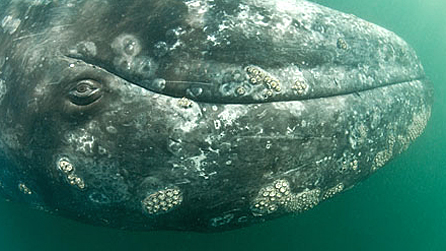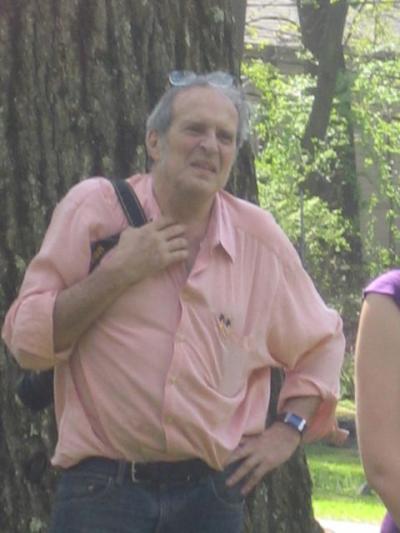Serendip is an independent site partnering with faculty at multiple colleges and universities around the world. Happy exploring!
The Story of Evolution and the Evolution of Stories: EvoLit

Welcome to The Story of Evolution and the Evolution of Stories, offered in Spring 2011 @ Bryn Mawr College. This is an interestingly different kind of place for writing, and may take some getting used to. The first thing to keep in mind is that this is not a place for "formal writing" or "finished thoughts." It's a place for thoughts-in-progress, for what you're thinking (whether you know it or not) on your way to what you think next. Imagine that you're not worrying about "writing" but instead that you're just talking to some people you've met. This is a "conversation" place, a place to find out what you're thinking yourself, and what other people are thinking, so you can help them think and they can help you think. The idea is that your "thoughts in progress" can help others with their thinking, and theirs can help you with yours.
We're glad you're here, and hope you'll come both to enjoy and value our shared imagining of the future evolution of ourselves as individuals and of our gendered, scientific, technological world. Feel free to comment on any post below, or to POST YOUR THOUGHTS HERE....

"Last Chance to See"

An extract from Last Chance to See....
Writing two months after this class ended...

"Why not revel in the alternatives?"
If I were still putting together lecture notes to share with y'all, I'd be sure to mention a New Yorker article called "The Possibilian," about a neuroscientist named David Eagleman who says that "Science had taught him to be skeptical of cosmic certainties.... From the ..'alien computational material' [that is brain tissue] to the mystery of dark matter, we know too little about our own minds and the universe around us to insist on strict atheism.... 'And we know far too much to commit to a particular religious story.' Why not revel in the alternatives?....'Part of the scientific temperament is this tolerance for holding multiple hypotheses in mind at the same time.....

From Reality to Randomness
"Death and life have their determined appointments; riches and honors depend upon heaven." - Confucius

Recycling Darwin
A few weekends ago University of Maryland Medical Center held their annual conference (started in 1995) during which doctors meet and attempt to identify the mysterious illness(es) that killed Darwin. I found it somewhat fitting that while during Darwin's time no diagnosis could be made, as medicine has continued to evolve the same questions and illnesses are recycled in order to aid in the development and evolution of the field itself. I like the idea that even events of the past, that a are long gone, and pose no significant selective pressure to a species continue to be used as lessons for the future. I find it most fitting that Darwin's death is used as the mystery case.

Group Project Write Up
When thinking about what kind of a project I wanted to do for the end of the semester, I tried to think about the different ways our class had learned and been taught to learn over the course of the term. For me, the two most important things I came to understand where the way I presented myself in arguments, and the ways I learned to hear more openly, and allow my views to shift. Consequently, my group decided to create a human barometer in which our classmates would line up on a spectrum ranging from ‘strongly agree’ to ‘strongly disagree’ as they responded to prompts inspired by the works we studied in class. In keeping with the ‘evolution’ centric topic, we ordered our prompts in the same order as we read/watched them.

Venn Diagram Reflection
About two weeks before we gave our final presentation our group sat down over lunch and we discussed ways that we could represent what we leaned this semester. All of us agreed that this class helped each of us to see the thin or overlapping boundary between science and literature. Our original intent was to go through our notebook and select a few key terms that we had repeatedly discussed throughout the semester. Thinking back to our lower school days (maybe for some of us middle school...or college) we decided to organize these terms into a venn diagram with the two main circles being science and biology. We expected that most of the terms would correspond to either biology or literature, but that some terms would find a home in the middle circle.
Final Presentation
As our group sat down to think about our final presentation, we decided that we wanted to look at some of the big themes and ideas that we had discussed throughout the semester. We decided that we thought it would be interesting to place these terms into a venn diagram. When we first started to sort out the words we figured that there would be some that would go in the middle, but that there would also be some that very clearly applied only to literature or science. As we started to talk more, however, it became more and more clear that every term was going to go in the middle. I think that this really summed up our class for me because it traced my own journey through the class. I came into the semester thinking that there would be some overlap, but a

Final Presentation: Our Story
Throughout the course of the semester we discussed many things that questioned many themes that seemed to have been established. What is foundational and what isn’t foundational? This was a big picture issue that we dealt with throughout the semester. The development of stories and how they keep on changing.
It all seemed so much that we did not know where to begin with this project. Therefore, we decided to look at everything we had touched upon and use the tools we had gathered from it to create our own story. We did a personal exploration as to what we had learned and obtained from this course. I, personally, obtained fresh eyes. Now I try to look at everything from every possible angle in order to understand it.
This is why we decided to create our own Story of Evolution. We began with the primary organisms that are now extinct and sort of spread out from there. Throughout the course of the evolutionary story there are parallels. There are two sides of the story: what actually happened and an alternative story.
Final presentation: the mystery basket
My group for the final presentation consisted of Vivien, Kerlyne and myself. During out meeting to decide on what we wanted to discuss and the manner in which it should be carried out, for the most part we were stumped. During our brainstorming period, we decided it would be best if we could come up with the topics in which our presentation would be based. Randomness, science vs humanities, Library of Babel, adaptations... Basically we wanted to discuss the major topics that was brought up through the course of this class.

report on presentation
Group Presentation
For our presentation my group created a barometer – we made a spectrum outside on the green, with one person standing on one end as ‘agree’ and another on the other end as ‘disagree’, with plenty of room in between. (If anyone has taken any education classes at Bryn Mawr they might be familiar with this exercise). Each of us then proceeded to read out a statement from one section of the class – with the five of us, we were each able to pick one topic. The questions were:
Devanshi: Randomness is an awful thing to teach high school kids. (Darwin)
Hannah: Memes set us aside from the rest of the animal kingdom. (Dennett)
Hope: There are some areas of life that science should not address. (Generosity)

How Random is Randomness anyway?
For my final performance, done with Toan and Kerlyne, we decided to focus on randomness and chance. Those topics were ones that we felt stuck with us and impacted us greatly. It is also a topic that still perplexes me. In order to show how randomness is still very much "controlled" by other factors, we decided to choose ten different topics (covered in class) to put in a hat (or basket, rather). Then, we assigned random numbers to each student, and this was done by having them count off. Professors Dalke and Grobstein each chose two numbers (from one to however many students in class) and those four students randomly chosen picked out of a hat and randomly chose a topic.

Creating Darwin, My Lovely Paper Mache Pigeon
For my Final "Performance" I opted instead to create rather than to perform. Darwin, the large paper mache pigeon that you all saw in class, is the final product. My presentation was very short, but that is because I really wanted to just present the fruit of my labor and make sure the bigger groups had enough time to perform their presentations. He took 5 days in all to make. First, I applied strips of newspaper dipped in a flour/water mixture to the exterior of two inflated balloons(one for the head and one for the body). I let that dry for 24 hours before attaching the two with newspaper, tape, and superglue. Then I started painting his head and neck. After letting the paint dry, I painted his eyes and made a beak out of newspaper and superglued it to his face.

Evaluation
Self-Evaluation
Initially, I signed up for The Story of Evolution because I saw that it was cross-listed for both English and Biology, and would give me a natural science credit; the course seemed a great way to fulfill a graduation requirement while managing to avoid dissecting anything. I didn’t know of anyone who had taken the course (although, as I’ve talked about it throughout the semester, I’ve discovered that several of my friends have taken it before), and I had no idea what to expect.

Evolution: It's All Fun And Games In Our Final Group Performance
For our final performance, we wanted to interactively demonstrate evolution in a nutshell (or coffee bean, as the case may be) and incorporate its principles into the evolution of literature and memes.
We put the names of books, movies, songs and popular quotes onto a variety of utensils: forks, spoons and knives. We then gave each person a cup, one of the utensils and 30-seconds to compete with each other to get the most coffee beans into their cup.

"why we celebrate a killing"
More grist for the mill: Jonathan Haidt, a psych prof @ UVA, wrote in the NYTimes this morning about "why we celebrate a killing." He uses he language of evolutionary psychology to explain the "social sentiments" and "collective effervescence" of what Émile Durkheim called "Homo duplex," or "two-level man." (This story makes me shudder.)





